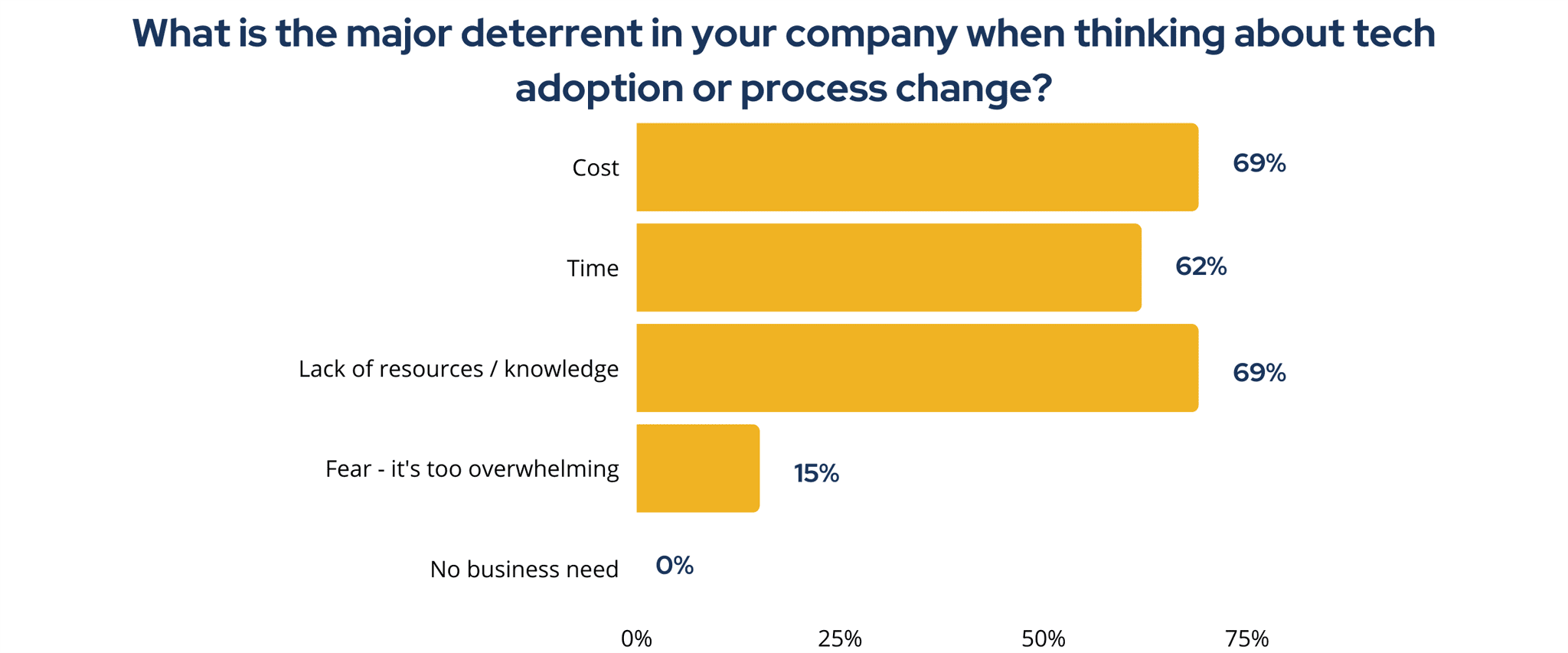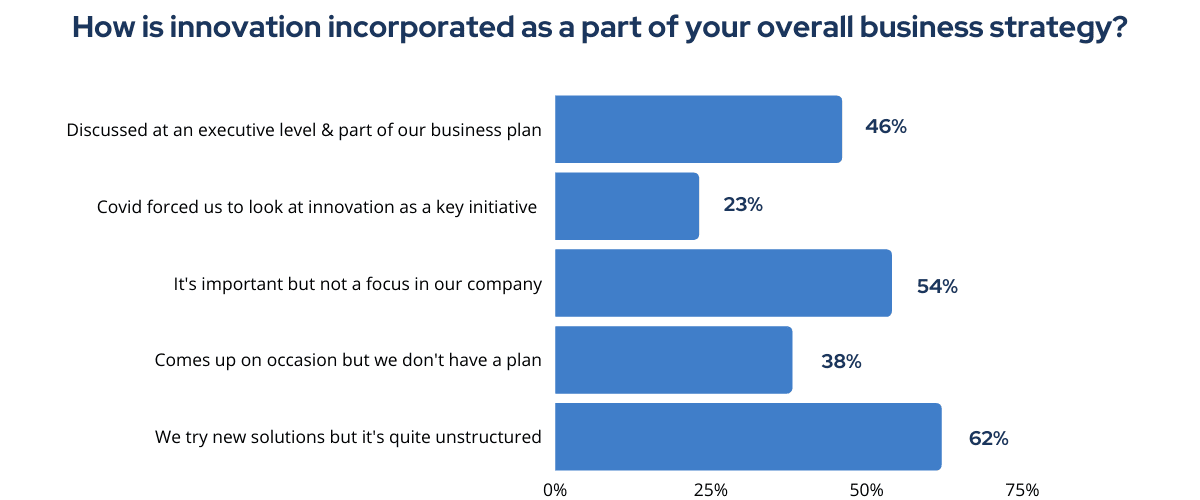Why Scaling Successfully Requires the Right Digital Plan & Taking Calculated Risks
The following summary is from an event we held with Marin Ivezic, Best-Selling Author and Partner of Cybersecurity & Privacy at PwC. Marin has spent the last 30 years living and working in Silicon Valley, Europe, China, and the rest of Asia, giving him a unique perspective on emerging technologies.
The importance of adopting emerging technologies is increasing globally. With the rapid technological advances every year and the changing economic landscape, companies that commit to a long-term digital strategy have the advantage to be more competitive and scale operations more successfully. While adopting emerging technologies can come with risks, the payoff in the employee and customer experience is worth the investment.
We recently hosted a fireside chat with cybersecurity and technology expert, Marin Ivezic, on the Risks & Rewards of Emerging Technologies. Through audience polling and panelist insights, we were able to uncover key learnings on how emerging technologies shape different societies and what challenges they might bring. During the event, Marin and VistaVu’s Vice President of R&D and Technology, Jeremy Crossman, sat down to discuss technology trends, the importance of cybersecurity, and how companies can take actionable steps to digitize operations and automate workflows.
Audience engagement in the form of poll questions helped to reinforce real world strategies that mid-market companies are implementing today to get started on their digital transformation.
Based on the discussion, here are three key takeaways for business leaders and technology advisors:
1) Waiting to Adopt Technology Is Not an Option
What was evident from this discussion was how important it is for leaders to articulate a clear technology vision, while investing in a broad range of digital tools that are relevant for the business. Having an open, innovative mindset is key. As technological advances accelerate, those who do not continually adopt and adapt their business processes will fall behind and find it almost impossible to catch up.

Not surprisingly, the audience cited that the main deterrents of technology adoption are cost (69%), lack of resources or knowledge (69%), and time (62%). These three areas are consistently seen as roadblocks across different industries and geographies, no matter the company size. However, we have come a long way from the early days of technology adoption where corporate leaders were hesitant to embrace change. As noted by Marin, “if we were to consider a similar poll two or three years ago, respondents would have certainly stated that there was no business need”. The global pandemic has shined a light on the importance of technology and has forced companies to reevaluate their digital roadmap in a condensed period. Specifically for mid-market companies, there is a benefit of being smaller, more agile, and more flexible compared to large enterprises when it comes to digital transformation.
While cost, for example, may seem like a major deterrent upfront, organizations that are most successful are those that think longer term and experiment and invest in new technologies to support the business. As presented in “The Case for Digital Transformation” by the National Center for the Middle Market (NCMM), middle market companies that are thriving have found ways to infuse digital tools into their strategies and have “implemented sound risk management plans that mitigate the effects of an operational breakdown, interruption, or cyber event.” By developing an educated risk strategy, companies can differentiate themselves from competitors, establish process efficiencies and stay ahead of the curve. The long-term benefits in ways of cost reduction, innovation, and automation far outweigh the initial deterrents of cost, time, or lack of knowledge.
2) Internal Alignment is Key
Knowing the importance of incorporating technology into your organization and implementing technologies are two very different challenges. Establishing internal alignment across departments and encouraging a digitally focused culture are key success factors when introducing technology into any business.
When we asked our audience how innovation was incorporated into their business, 62% of respondents cited that they try new solutions even though it is quite unstructured, 54% said that while innovation was important, it was not a focus in their company, and 46% said that it is discussed at the executive level and a part of the overall business plan.

Marin defines successful organizations as those who “see technology innovation as a combined effort from IT, Business, and Employee and Customer Experience.” Business benefits don’t come from siloed efforts. True change is made when departments collaborate and when companies value the interconnectedness that technology plays across the organization. Adopting tech should not be ‘an IT problem’, it should transcend across company divisions.
NCMM predicts that as mid-market companies start to increase spending again, “the largest areas of focus will be in business analytics, strategy, and innovation as companies move beyond core business functions and begin to focus on projects and processes that directly affect their operations and future offerings.” Companies that have a leadership team that drives continuous innovation and promotes a digital culture will have higher employee retention, greater alignment across different groups, and maintain a workforce with an advanced digital skill level to better support customers.
3) Iterative Change & Adoption
While there is no rule of thumb approach to adopting technology, a first step is to proactively review tech trends and solutions in your industry to determine the best way to apply it to your business and within your culture. Make a business case to share internally, create a task force that is dedicated to progress and change, and continue iterating on and improving the use of your chosen technology so that you can move your company closer to its shared goals and vision. Make it clear how this technology will benefit the entire organization.
For example, are your goals to:
- Reduce manual labor required by your team?
- Differentiate from competitors through faster production time? Higher quality products? Lower cost?
- Increase the safety on your worksite?
- Reduce your environmental impact?
Technology is everchanging and ever improving. As Marin shared, “it’s all about building resilience and understanding that it’s OK to fail.”
Adopt, adapt, and adjust.
Start Building your Digital Roadmap
If you have any questions on how your company can take actionable steps towards digitization, or if you would like a free company assessment to understand your digital maturity, feel free to contact us.
Tags:
ERP
May 3, 2021




